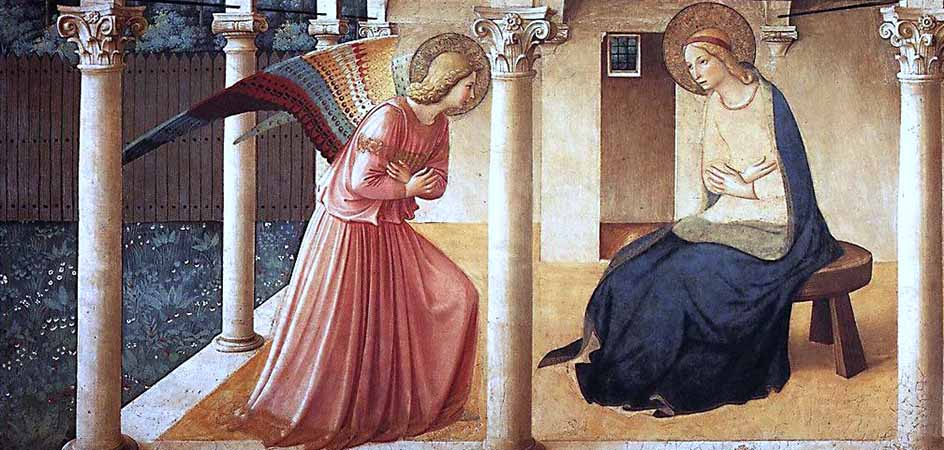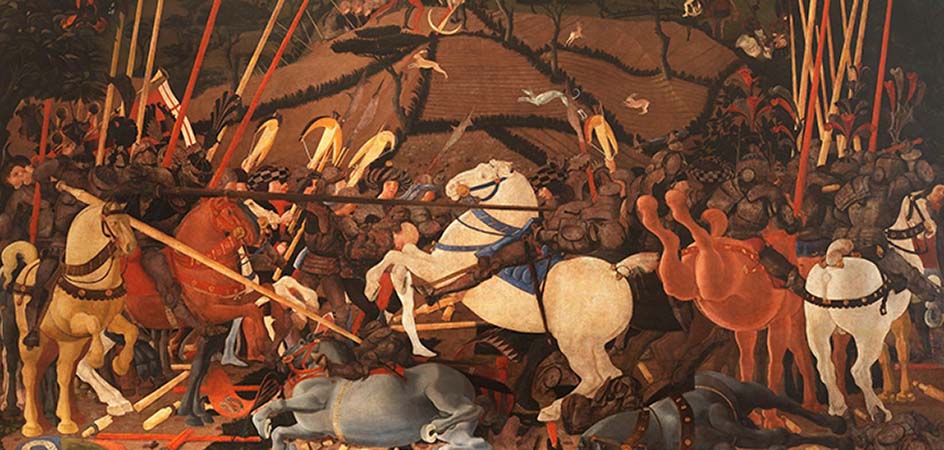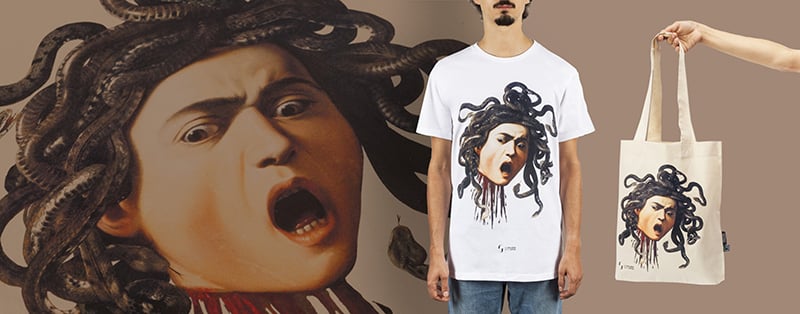It was discovered on November 15, 1553, just outside the gates of Arezzo, during excavations for the construction of new city walls. It was rusted and dirty, its tail in fragments, two legs broken, and both eyes and jaws missing. And yet, there was no doubt: it was an Etruscan sculpture – and a magnificent one.From the moment it was unearthed, the Chimera of Arezzo has sparked interest, admiration, and even a certain sense of awe. Today, it is kept in the Museo Archeologico Nazionale of Florence, where it continues to astonish and captivate visitors. Let’s find out more about this extraordinary historical artifact.
From “Leone di bronzo” to Chimera: the mystery behind its iconography
A few days after it was excavated, the large bronze sculpture with animal features was taken to the Palazzo Vecchio in Florence. Grand Duke Cosimo I, an enthusiast of “antiquities” (as they were called at the time), wanted it for his collection.
It was clear that this was an ancient sculpture: the Etruscan inscription “Tinścvil” (meaning “offering”), engraved on the right foreleg, left no doubt about its origins. Determining exactly what it represented, however, wasn’t so straightforward.
Many parts were missing or damaged when it was found: the legs on the left side were broken, the tail reduced to a stump, and one horn was incomplete. It was clearly a monstrous creature with a lion’s body and a goat’s head on its back, streaked with rivulets of blood – but which monster, exactly?
While scholars in Florence and Rome, experts in classical antiquity, exchanged information and hypotheses to decipher its identity, the so-called “Leone di bronzo” remained hidden from public view. A troubling suspicion had arisen: the creature’s main body resembled the Marzocco – the lion symbol of Florence – while the goat’s head recalled Cosimo I’s zodiac sign, Capricorn. Both figures were wounded, dying: could this be an omen predicting the grand duke’s demise?
In April 1554, a Roman medallion depicting a similar image provided the answer: the sculpture was the Chimera, the fearsome three-headed monster from Greek mythology. No longer considered a bad omen, the bronze statue became a genuine political manifesto, symbolizing the enemy vanquished by Cosimo I, the modern Bellerofonte.
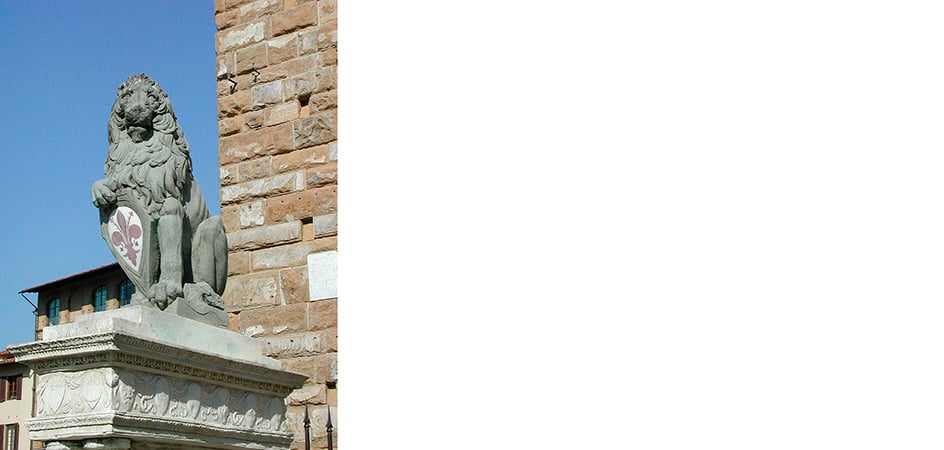
The myth of Bellerofonte and the Chimera
Renaissance scholars were familiar with the myth of Bellerofonte through the works of Omero and Esiodo (8th century BC). These poets describe the Chimera as a triple-bodied, fire-breathing monster: the head and body of a lion, a second head of a goat (in Greek, chimera literally means “goat”), and a tail ending in a serpent’s head. Descended from the same lineage as Cerbero and the Idra di Lerna, the Chimera terrorized Licia in southern Anatolia. Bellerofonte was sent on a suicide mission to defeat it.
Exiled from Corinto, the young hero took refuge at the court of King Preto and his wife, Stenebea, who fell in love with him. When he rejected her, she sought revenge by convincing her husband that Bellerofonte had tried to seduce her. Preto, determined to punish him without shedding blood and thus violating the sacred laws of hospitality, dispatched the young man to the court of Iobate – his father-in-law and the ruler of Xanthos – under the pretext of delivering a tablet. Hidden on this tablet was a request that Iobate kill its bearer. He, too, hesitated to break the rules of hospitality, so he ordered Bellerofonte to slay the three-headed monster, fully expecting him to die in the attempt.
Things, however, did not go as planned. With Atena’s protection, Bellerofonte found the Chimera and, riding the winged horse Pegaso, struck it with a spear, killing it. As a reward, Iobate gave him the hand of his second daughter, Filonoe.
The myth of the Chimera and Bellerofonte’s victory was widely depicted in Italic art, and the Christian legend of San Giorgio e il drago is likely derived from this very ancient pagan tale. Still, despite the myth being well known in the Renaissance, Florentine intellectuals initially doubted the identity of the newly discovered Etruscan sculpture because its serpent-like tail was missing. The tail we see today was added in the 18th century.
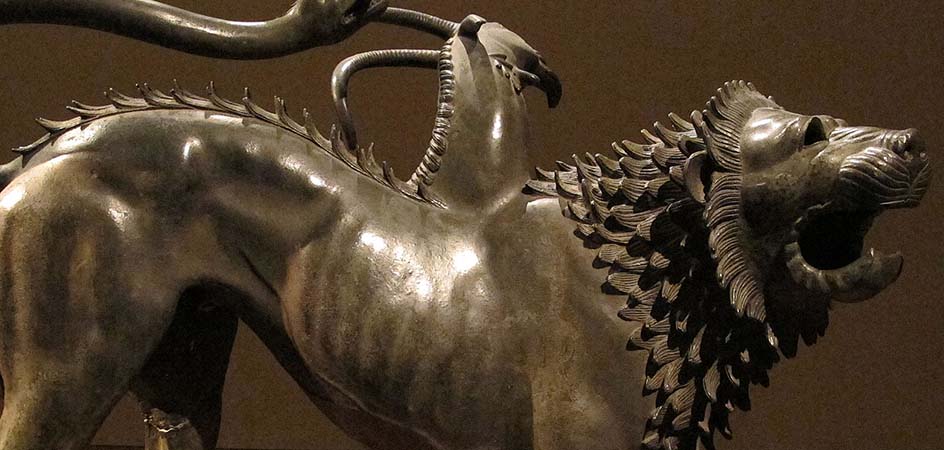
Restoration and placement
Over time, the Chimera’s symbolic significance waned and fell out of favor with the Medici family. It wasn’t until 1717 that Cosimo III decided to place it in the Galleria degli Uffizi alongside other ancient bronzes.
In 1782, when Luigi Lanzi moved the Minerva of Arezzo to the Uffizi, the Chimera’s missing parts became a pressing issue. A few years later, the sculptor and artist Francesco Carradori added the missing tail, which, for structural reasons, rests against the partly reconstructed horn of the goat.After spending several decades in the Uffizi, the Chimera was transferred to the Regio Museo Archeologico of Florence – now the National Archaeological Museum – where it occupies a dedicated space next to the Arringatore, another superb Etruscan bronze.
A matchless masterpiece with many descendants
We do not know for certain when or why this piece was created, but most scholars date it to the early 4th century BC, attributing it to Etruscan and Magna Graecia artisans. It was likely intended as an offering at a sanctuary on the outskirts of Arezzo.
What is certain, though, is that it is one of the most extraordinary examples of ancient sculpture. Its tense, coiled pose conveys the pain inflicted by Bellerofonte. Although we can’t see the hero astride his winged horse, we can easily picture him: the monster shrinks back, almost crouching under his menacing presence, its lion-like face filled with anger and agony, heightened by the absence of its jaws.
Meanwhile, the goat’s head seems already to have resigned itself to its fate, with drops of blood trickling down its neck and across the rest of its monstrous body in remarkably realistic detail.
Are you interested in articles like this?
Sign up for the newsletter to receive updates and insights from BeCulture!
Though the Chimera spent very little time in its hometown, the people of Arezzo remained closely connected to it, even adopting it as the emblem of the Porta del Foro district. Over the years, it has been reproduced in various materials and installed in several parts of the city: in 1933, two bronze copies were made and placed outside the railway station, only to be melted down later for wartime needs.
In subsequent years, further castings were created, including a remarkable 2010 reproduction by the Fonderia Artistica Marinelli.
No one knows if the Chimera will ever return to its birthplace. One thing is certain, however: it is tangible proof of the cultural and artistic achievements of the often-overlooked Etruscan civilization. If you have never seen it in person, a trip to the Museo Archeologico of Florence is a must!







